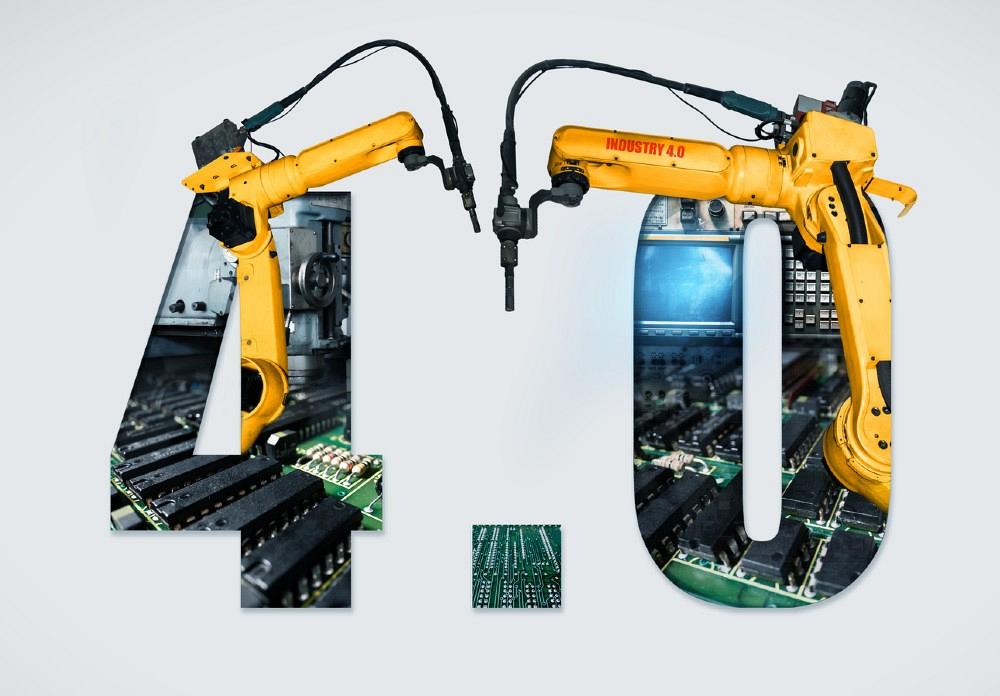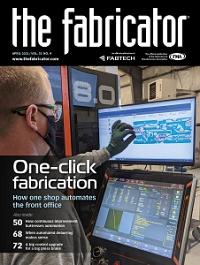Senior Editor
- FMA
- The Fabricator
- FABTECH
- Canadian Metalworking
Categories
- Additive Manufacturing
- Aluminum Welding
- Arc Welding
- Assembly and Joining
- Automation and Robotics
- Bending and Forming
- Consumables
- Cutting and Weld Prep
- Electric Vehicles
- En Español
- Finishing
- Hydroforming
- Laser Cutting
- Laser Welding
- Machining
- Manufacturing Software
- Materials Handling
- Metals/Materials
- Oxyfuel Cutting
- Plasma Cutting
- Power Tools
- Punching and Other Holemaking
- Roll Forming
- Safety
- Sawing
- Shearing
- Shop Management
- Testing and Measuring
- Tube and Pipe Fabrication
- Tube and Pipe Production
- Waterjet Cutting
Industry Directory
Webcasts
Podcasts
FAB 40
Advertise
Subscribe
Account Login
Search
What will the future metal fabricator look like?
Those in the manufacturing industry who make best use of information, data sharing will win
- By Tim Heston
- April 26, 2021
- Article
- Shop Management

We’re told across the manufacturing industry that Industry 4.0 is a revolution. For those in the metal fabrication sector who see the big picture, it likely will be. Getty Images
We’re told Industry 4.0 is an industrial revolution as significant as the transition from cottage industries to the Henry Ford assembly line. Such transitions take years, and Industry 4.0 is no different. The puzzle pieces are starting to appear. The challenge is seeing how they all fit together.
To find out, let’s try a thought experiment and imagine what a custom precision sheet metal fab shop of the future might look like. First, having excess machine capacity is conventional practice. The more excess capacity an operation has, the more demand variability it can handle, and—with so many lanes on the shop floor highway—the smoother jobs can flow from one step to the next.
An operation has just one or two extraordinarily high-powered fiber lasers, perhaps in conjunction with a punch/laser combo system (for form-tool capabilities), feeding a collection of automatic-tool-change press brakes, each of which can be robotized or operated manually depending on the job, made possible through advances in programming and safeguarding.
If something has a QR code, its usage is being tracked. For instance, tooling usage would be tracked every time a brake or punch tool is inserted and every time a machine cycles. And that tracking information is not just used to see when it’s time to sharpen or buy a new tool. It is integrated with job costing data, quoting data, and general market data to guide both technology and business development.
Machines continually send data to a server, run on-site by the fabricator or off-site by the machine OEM or third party. The idea is to compare operational data with data from other machines and other shops. In this way, the machines learn and, ultimately, become more adaptable.
Lasers adapt to different surface conditions and slight thickness variations; part offloading adapts to the nest at hand, producing information the company’s automated nesting engine can use. This in turn is connected directly to a customer-facing, web-based quoting engine that automates order processing.
Extending this further, data could be sent to material suppliers so they can perfect their own leveling and processing. A long and skinny part cut from a sheet full of stress can spring up and crash a head. The right leveling technology at the service center (roller, stretcher leveling, etc.) should, at least in part, mitigate the problem.
Back at the fab shop, parts flow from cutting to bending to welding to powder coating, and in each operation adaptable automation plays a prominent role. For instance, in powder coating, a robot wielding a spray gun operates with a vision system that produces a “digital twin” that gives the robot an image of the part hanging in front of it. Connected to an artificial intelligence (AI) engine, the robot instantly “learns” how to spray the workpiece for complete coverage.
Perhaps most significant might be the business relationship changes between different players in the supply chain. For instance, the “as a service” model (e.g., software as a service) might enter the machine tool world. Imagine fabricators paying not for a machine but for the service that machine provides—that is, the parts it produces. Such an arrangement aligns everyone toward the common goal of throughput. The more value (good parts) a machine creates, the more money both the fabricator and the machine OEM make.
The devil is in the details, of course, and the arrangement probably needs a coordinated agreement with suppliers to ensure quality raw stock. Regardless, enabling it all is continuous data-sharing between the machine-maker and its machine at the fabricator.
Still, even this level of sophistication is just a piece of the order-to-cash puzzle. Intelligent, adaptable laser cutting and bending are great, but they might not make a shop more competitive if an order takes weeks to reach the shop floor, or if parts are packaged incorrectly and damaged during shipment, or if someone insufficiently masks a hardware location or other areas of the workpiece before coating, or … well, you get the idea.
Every step of the process chain, from order to cash, can be improved with better utilization of information. Sometimes this entails old-fashioned worker training and clear instructions. Sometimes this involves software algorithms that help streamline or automate quoting and order processing, manage scheduling, make machines adaptable, and push overall throughput through the roof. Assemble all those puzzle pieces in the right way, and you get an incredible picture.
About the Author

Tim Heston
2135 Point Blvd
Elgin, IL 60123
815-381-1314
Tim Heston, The Fabricator's senior editor, has covered the metal fabrication industry since 1998, starting his career at the American Welding Society's Welding Journal. Since then he has covered the full range of metal fabrication processes, from stamping, bending, and cutting to grinding and polishing. He joined The Fabricator's staff in October 2007.
subscribe now

The Fabricator is North America's leading magazine for the metal forming and fabricating industry. The magazine delivers the news, technical articles, and case histories that enable fabricators to do their jobs more efficiently. The Fabricator has served the industry since 1970.
start your free subscription- Stay connected from anywhere

Easily access valuable industry resources now with full access to the digital edition of The Fabricator.

Easily access valuable industry resources now with full access to the digital edition of The Welder.

Easily access valuable industry resources now with full access to the digital edition of The Tube and Pipe Journal.
- Podcasting
- Podcast:
- The Fabricator Podcast
- Published:
- 04/16/2024
- Running Time:
- 63:29
In this episode of The Fabricator Podcast, Caleb Chamberlain, co-founder and CEO of OSH Cut, discusses his company’s...
- Trending Articles
Capturing, recording equipment inspection data for FMEA

Tips for creating sheet metal tubes with perforations

Are two heads better than one in fiber laser cutting?

Supporting the metal fabricating industry through FMA

Omco Solar opens second Alabama manufacturing facility

- Industry Events
16th Annual Safety Conference
- April 30 - May 1, 2024
- Elgin,
Pipe and Tube Conference
- May 21 - 22, 2024
- Omaha, NE
World-Class Roll Forming Workshop
- June 5 - 6, 2024
- Louisville, KY
Advanced Laser Application Workshop
- June 25 - 27, 2024
- Novi, MI


























